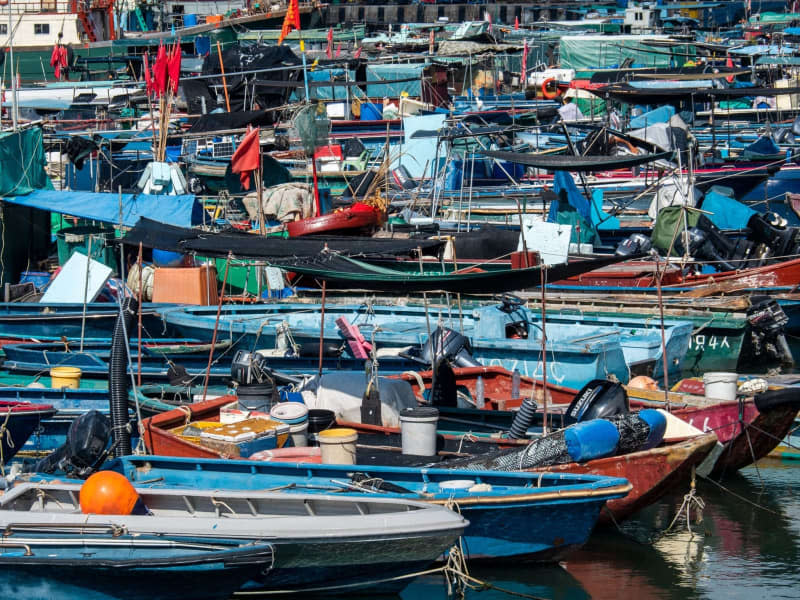Discovering Hong Kong's quiet islands far from the bustling megacity

When friends come to visit him Edmund Lai knows what to expect. "When it's about Hong Kong, everyone thinks about skyscrapers and people, people, people. But once we've embarked in a sea kayak, they never want to go back," says the 29-year-old. Lai is a kayak guide and loves island tours far from the megacity.
Of course, no one comes to Hong Kong just for the islands. Tourists want the panoramic views best seen at Victoria Peak, the city's own mountain. They come for the daily skyline lightshow titled "Symphony of Lights" and for entertainment, shopping, culture. In brief, they come to feel the pulse of a world-class metropolis.
But those longing for something different and some quietude should make sure to head out to the small islands in the South China Sea all around Hong Kong. Here are five such island destinations:
CheungChau: The historical and the divine
A picturesque harbour basin, a small town with a maze of alleyways, beaches - these are the reasons for visiting Cheung Chau, a welcoming place with a bay full of colourful boats.
Some of Cheung Chau's fishermen still live on board their vessels. Basil Hui, 64, an amateur historian from the island, notes that this used to be very common: "Whole families lived on them, it could be 10 people."
The bicycle is the preferred means of transport here, given the short distances on the 2.5-square-kilometre island. Two sandy beaches stretch out to the east, while orchid trees flank the promenade to the south-west.
To explore the island's southern tip, you will need to park your bike near the Taoist temple dedicated to Tin Hau, goddess of fishermen and the sea, and continue on foot as a flight of steps blocks the way.
Cheung Chau gets busy on weekends. During The Lantern Festival in January, the Tin Hau parades in April and the Dragon Boat Festival in June or July the island is particularly crowded, but it's still worth visiting during those times to experience the festive mood, Basil Hui recommends.
Sharp Island: Like a green dragon's back
This island is lonely. Surf slapping at the rocks and paddles splashing the water are the only sounds on the approach to Sharp Island which rears up like a green dragon's back. A sea kayak trip around the isle starts at the harbour village of Sai Kung. The 11-kilometre round trip takes one day.
Guide Edmund Lai adds two extra attractions to the tour: A stop at the open-air sculpture "Moonrise by Daylight" and a detour to Whiskey Beach on the neighbouring island of Kau Sai Chau. The dreamlike beach is about 80 metres wide, but it largely disappears at high tide. Barnacles grow on rocks in the crystal-clear water around Sharp Island. Black kites circle overhead. In deep harmony with nature, Lai says he feels "a sense of freedom" here.
PengChau: Street art and incense coils
The leisurely pace of life on the island of Peng Chau is infectious, thanks to its traffic-free alleyways.
Peng Chau is no bigger than 1 square kilometre. Opposite the market, fish hang out to air-dry, and chicken feet lie in a bowl outside a butcher's shop. Make sure to admire the street art too, collages made from discarded mobile phones and a graffiti-covered wall with a red-painted bicycle draped in front of it.
The huge smoking incense coils in the vestibule of the Tin Hau temple, not far from the ferry pier, could be mistaken for hanging lamps - if it weren't for the ash falling on visitors' heads and clothing.
Po Toi: Off to see Monk and Turtle
Fishermen's huts instead of skyscrapers, the murmur of waves on the shore instead of traffic noise: Hong Kong's southernmost isle Po Toi is another car-free island, with the only village located at the bay's ferry landing.
A sign-posted concrete path runs parallel to the rugged coastline and climbs up to rock formations called Monk and Turtle. A branch-off leads to a rock face with engravings that are more than 3,000 years old. Candy Lau Kam Lin, 66, profits from the fact that the path goes right through her small restaurant where she serves up a cold, sweet soup made from mung beans and flavoured with common rue and dried seaweed.
Tung Ping Chau: A geological picture book
The ferry trip to Hong Kong's most remote isle takes almost two hours. Another car-free island, Tung Ping Chau is a picture book of geology, with pancake rocks whose veins alternate between rusty brown, yellow and ochre. The circuit walk around the island takes about four hours.
You couldn't feel further away from the megacity than inTung Ping Chau, where bamboo groves rustle in the breeze and butterflies are dancing. The aerial roots of a banyan tree wrap around a dilapidated house like tentacles. And in the Tin Hau temple, you will encounter the goddess of the sea as a perfect beauty.








